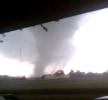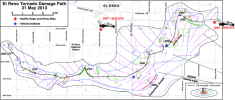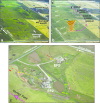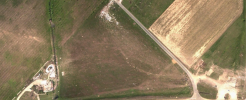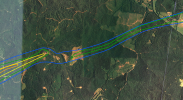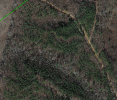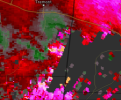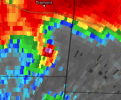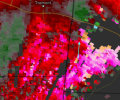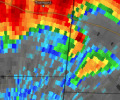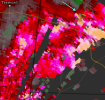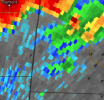Which
@joshoctober16 seems to have disproven earlier in this thread, showing blowdown across the alleged gap:
This anonymous unqualified person sounds like a strong enthusiast but one who seeks evidence to fit his ideas, rather than letting it shape his ideas. I certainly don't see anything that indicates he's read that thesis I linked.
If you're not going to post any of the fundamental basis - like formulae and mechanisms - as to how he's coming to these conclusions, then I'm not going to give them much credence.
im very 50/50 on smithville being 2 tornadoes.
its either
1:the smithville tornado weaken going north and then died, had a replacement tornado form almost where the last one was and made no true gap, the second tornado very likely was EF5 if true.
2:the smithville tornado weaken going north , then made a loop as a EF0 , and later on turned back into a wedge with very likely EF5 winds
would need to see a radar velocity of this moment to see what happend.
one thing to note that could both be sneaky to make seem like it was or wasnt 2 tornadoes is...
there are signs of strong EF0 damage in this apparently gap , however it is to note.
1:it could of been a microburst , or the second tornado touched down going south for a few seconds.
2:it is the same tornado and weak to mid EF0 damage can not be seen on sat images (visible tornado tree damage starts at strong EF0)
a example of a tornado appearing to die but didnt and a tornado that did cycle but isnt listed as cycled are...
Pilger EF4 2014 (the one that hit the town) hit the town of Pilger as a very strong EF4 , weakened and almost did a loop , appeared to rope out , but was infact still on the ground , just invisible, and was at a weak EF1 stage , then restraighten to a strong EF4 (the famous double wedge image is during this)
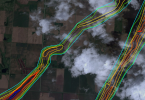
Shawnee EF4 2013 (day before the Moore EF5) was infact 2 tornadoes but isn't listed as 2,
the main EF4 (likely was a EF5 at this moment) started to moved north , appeared to start doing a loop , and died.
a second tornado going south for a few seconds then turned to go north east over the highway.
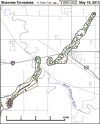
pretty much Smithville did one of these 2 options , but at a faster 60+ mph forward speed.

